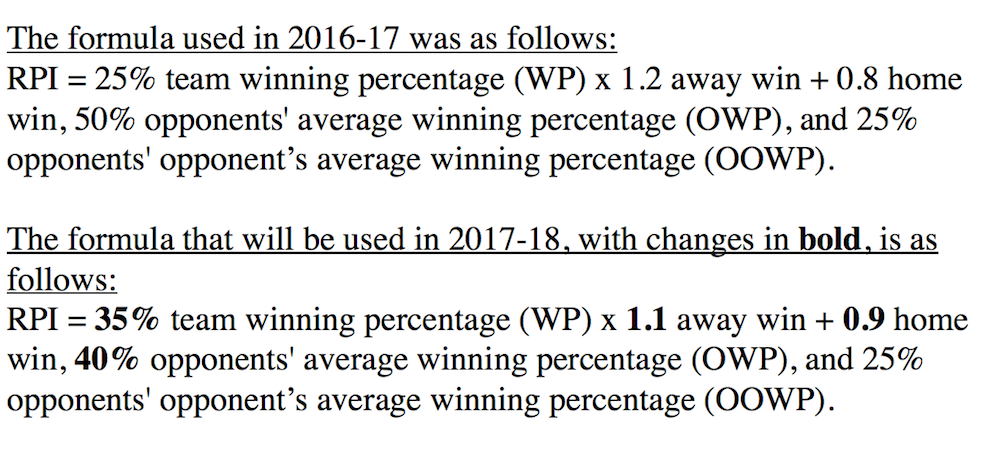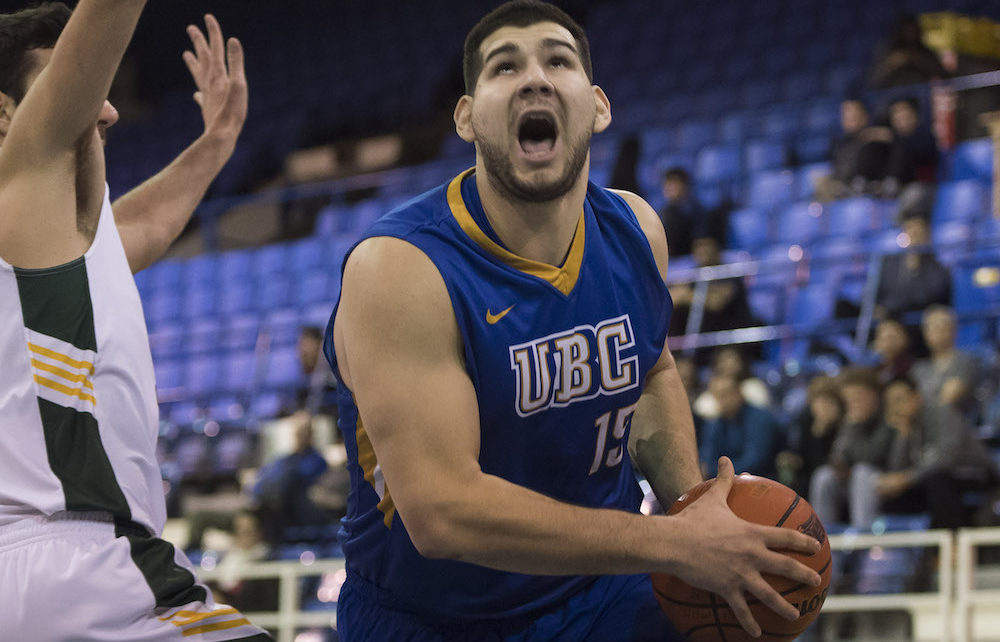VANCOUVER — Martin Timmerman has taken the old numbers and done the new math.
And although there isn’t any kind of guarantee for fans of the UBC Thunderbirds men’s basketball, it does strongly suggest an upward rebound in the exchange rate of a 19-1 conference record in the Canada West for this coming 2017-18 season.
We are, of course, talking about the Rating Percentage Index, or RPI, the latter three-letter word evoking nightmarish late-season memories for ‘Birds fans.
Remember back to late February?
That’s when the strength-of-schedule formula used last season for the first time to determine seedings heading into the conference championships turned UBC’s 19-1, first-place record into a No. 4 overall seeding.
The ‘Birds, of course, did themselves no favours with a quarter-final home-court ouster at the hands of the sixth-place, No. 5-seeded Manitoba Bisons.
Yet the facts remain that any team which finishes first but is seeded fourth after losing just once in 20 games while playing the hand it has been dealt in a league with an unbalanced schedule is pretty pioneering to say the least.
On Thursday, however, Canada West released a revamped formula, and Timmerman, the nation’s authority on RPI-related basketball matters through his USportshoops.ca site, very quickly plugged last season’s numbers into the new equation.
The result?
If the current formula was in place last season, UBC would have taken a No. 1 seed into the conference playoffs instead of the No. 4 seed.)
2016-17 SEEDINGS
(Using new the Canada West formula, with last season’s actual men’s RPI finish in parenthesis. Thanks to Martin Timmerman and USportshoops.ca)
- UBC Thunderbirds 19-1 (4)
- Calgary Dinos 16-4 (1)
- Alberta Golden Bears 14-6 (3)
- Saskatchewan Huskies 14-6 (2)
- Manitoba Bisons 12-8 (5)
- Lethbridge Pronghorns 13-7 (6)
- Winnipeg Wesmen 12-8 (7)
“It closer reflects wins and losses, which I think is a good thing,” said Timmerman of the new formula, while stressing that the sample size produced by just 17 conference teams playing an unbalanced 20-game schedule is hardly ideal when compared to its initial intent of sorting through the mass of NCAA Div. 1’s much larger membership.
“Now, your own record counts for more than it did last season and it has reduced the effect of the opponents’ record,” he continues. “You work all year to win games and that is something that should be rewarded.”
Indeed, the biggest change to the Canada West RPI is the fact that 35 per cent of a given school’s winning percentage is plugged into the formula as opposed to 25 per cent last season, and that an opponent’s average winning percentage will be 40 per cent, as opposed to 50 per cent a season ago.
 As Timmerman’s numbers bear out, the top seven seeded teams from last season would remain the same regardless of which formula was used.
As Timmerman’s numbers bear out, the top seven seeded teams from last season would remain the same regardless of which formula was used.
Yet no team would make a jump as big as UBC, which improves three slots using the new math. The team taking the biggest dip was Saskatchewan which would have been fourth instead of second.
You can follow all of Martin Timmerman’s news and postings by clicking here.
Click here for last season’s actual top 17 seedings through USportshoops.ca
All of this, of course is nothing more than educational. Last season’s finish is what it was.
And because every team will not play six of its conference mates each season, no one can truly tell how the hot or cold each school’s numbers are going to be until the regular season reveals its true character.
Said UBC men’s head coach Kevin Hanson: “I think this new tweaking will be trial-and-error, and it seems like we are doing a lot of trial-and-error.”
At the very least, the road map seems to be a bit clearer in that a team which goes 19-1, despite not having the toughest schedule, can potentially finish with the No. 1 seed. If they didn’t, sports information offices from Victoria to Winnipeg might have a hard time marketing the game to their fans.
Yet Hanson, who admits he was a proponent of RPI in its initial stages of discussion, makes the most pertinent point of all about its effect on teams from one season to the next.
“As with anything in sport, as soon as there is something which affects your school, you are going to look more closely at it,” Hanson said. “That is what is happening with our conference. When something affects one or two schools, they speak up, and the rest say it’s not a problem.”
Interestingly enough, the OUA, after a few seasons of using RPI, is strongly rumoured to be dumping the format for basketball this coming season.
Hanson isn’t sure how the Canada West, the largest and most geographically diverse conference in the country, solves its issues, especially with the financial concerns of many of its smaller member schools might have.
As he says, the season ahead will be one of trial-and-error, and if you were part of a fan base whose school was affected greatly by last season’s RPI, you will greet each week’s new numbers with much greater interest.
“I don’t think it’s the best tool to use to rank your teams when there is such a discrepancy in who you play, and when it doesn’t take into account exhibition games,” said Hanson. “If it did, we would schedule Carleton, Ryerson, Ottawa and McMaster to help.”
Other changes in line for the 2017-18 men’s and women’s conference campaigns come in the form of post-season playoff format.
The top four seeds will once again receive opening-round byes, but instead of seeds Nos. 5-12 playing best-of-threes to create a quarterfinal bracket, they will play single-game eliminations.
As well, the concept of the conference’s Final Four Weekend has been scrapped.
Instead, two best-of-three semifinals will be staged at the highest seeds, with those two winners meeting the following weekend at the highest seed in a one-game conference championship.
If you’re reading this story on any other website other than one belonging to a university athletic department, it has been taken without appropriate permission. In these challenging times, true journalism will survive only through your dedicated support and loyalty. VarsityLetters.ca and all of its exclusive content has been created to serve B.C.’s high school and university sports community with hard work, integrity and respect. Feel free to drop us a line any time at varsitylettersbc@gmail.com.


